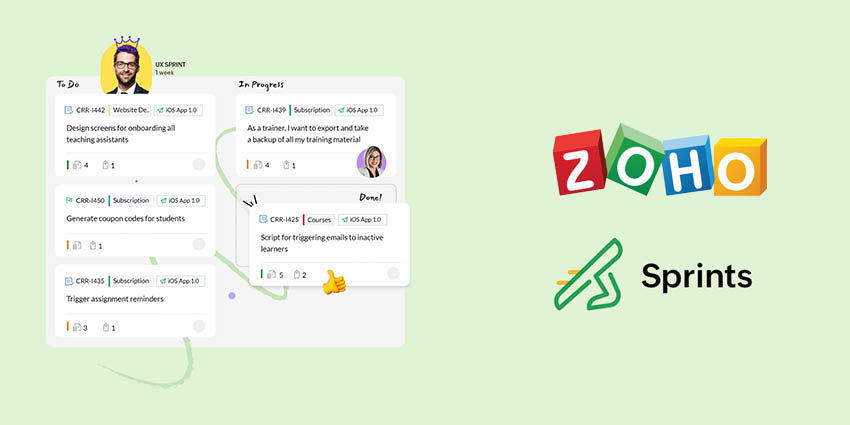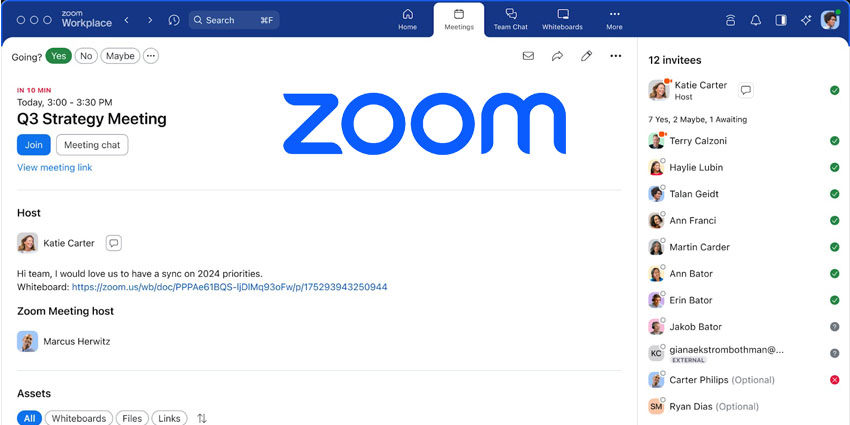For quite some time now, Scrum has been the most popular framework that’s followed as part of Agile project management. Simply put, Scrum makes complex processes easier for teams to digest by dividing them into smaller chunks, popularly known as “sprints.” Each sprint is worked upon throughout a time frame of 1-4 weeks, with the ultimate goal of producing a viable piece of software by the time it’s through.
Scrum always starts with a “backlog” – a list of end user requirements, which are then turned into “user stories” and broken down into smaller tasks. After prioritizing the work items from the backlog, the team can plan and add them to an upcoming sprint.
If one wants to use the Scrum method properly, a Scrum board is an indispensable part of the process.
So, what are Scrum boards, and how do you use them to your team’s advantage?
Usha Kuppusamy, Product Manager at Zoho Sprints is here to explain.
Scrum Board: The Basics
Basically, a Scrum board is where you track everything that has to do with a sprint.
“A sprint revolves around the Scrum board,” Usha explains. “The Scrum board is a visualization of a sprint’s current status at any given point, as well as a constant motivator helping the team achieve goals on time.”
In its basic variation, the Scrum board is divided into three columns: “To Do,” “Doing,” and “Done,” helping team members keep track of their progress and be at their utmost productiveness at all times.
“This simple visualization of the sprint’s progress is an ideal way of knowing how much work you’re handling at the moment, how much is left and how much you’re all done with, making everything more effective,”Usha notes.
Prior to the remote work era, a physical Scrum board – i.e., an office whiteboard or wall – was the most sensible choice, since all team members could gather around it, view and discuss progress and make decisions.
However, since virtually everyone is moving to some constellation of a hybrid work environment, online Scrum boards currently make more sense. Let’s have a look at why.
The Benefits of an Online Scrum Board
Unless a team works exclusively in-office, members have to collaborate remotely on sprints on a regular basis, which makes online project management tools a necessity.
“With many people working from home and teams being dispersed across different buildings, cities and even countries, real-time updates are very hard to do without,” Usha says.
“Teams need online dashboards and reports where all members have access to the sprint’s progress and can notify issues and discuss ideas. A good online Scrum board solution provides all that with minimum effort”
Here are some other key benefits of an online Scrum board:
- It’s customizable, allowing each user to view what they want, the way they want it.
- It provides real-time notifications about changes or updates, which means team members don’t need to constantly check the Scrum board.
- It allows a seamless view and use of data across different sprints, making Epics (large user stories) and long-term projects easier to plan.
- It generates automatic reports, which allows regular evaluations of the team’s progress.
- It encourages the team to be transparent with their work items, which in turn promotes great teamwork.
- All relevant documents and data can be stored and accessed online along with the respective task data, all in one place.
- It allows to easily forecast the completion and track the history of work items.
Why Zoho Sprints?
“There are various online Scrum board tools out there, but each has its own limitations,” Usha explains.
“While some solutions require reading extensive manuals to get started or use query language to create reports, others provide just a basic board, without any added features.”
Zoho Sprints’ vision is to provide an all-in-one Scrum board experience that would be both easy to use and rich in capabilities, offering auto-generated reports alongside other features supporting the Scrum process from A to Z, and requiring minimum effort on the user’s end. The solution is highly customizable in view and provides reports at different levels (sprint, project or cross-project).
“We see our Scrum board as the face of a team’s workflow, and make sure to provide our users with everything they need for their sprint in one place,” Usha concludes.
“We designed Zoho Sprints to be lightweight, flexible, and fit to be used by teams of all sizes, industries and experience levels.”







